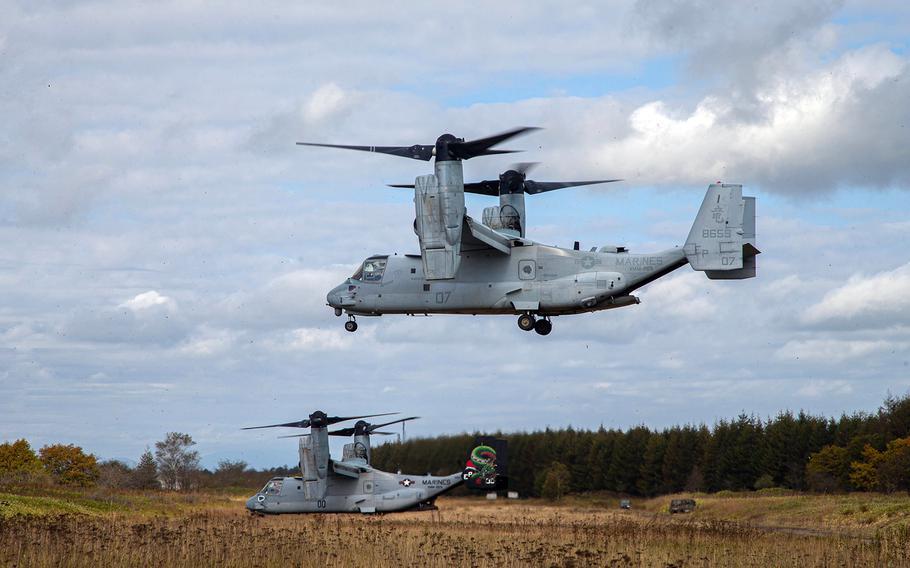Nestled among the lush greenery and azure waters of Okinawa, Japan, the United States Marine corps has made a strategic decision to scale back the number of Osprey aircraft stationed on the island. This move comes as part of a larger effort to address concerns raised by local residents and officials about the noise, safety, and environmental impact of these versatile tiltrotor aircraft. Let’s delve deeper into the implications of this reduction and the potential impact it may have on military operations in the region.
Impact on Military Operations in Okinawa
The Marine Corps has recently announced a reduction in the number of Ospreys stationed in Okinawa, which is expected to have a significant impact on military operations in the region. As part of a strategic realignment, the decision to cut back on the Osprey fleet aims to address concerns raised by local residents regarding noise pollution and safety hazards associated with these aircraft.
This move comes after years of tense relations between US forces and the people of Okinawa,who have long been wary of the American military presence on the island. By reducing the number of Ospreys, the Marine corps hopes to alleviate some of the tensions and improve relations with the local community. However, this reduction may also pose challenges for military operations in the region, as the Osprey has played a crucial role in providing rapid deployment and logistical support to troops stationed in Okinawa.
Challenges Faced by Marine Corps in Implementing Osprey Reduction
The decision to reduce the number of Ospreys in Okinawa presents several challenges for the Marine Corps. One major issue is the potential impact on operational effectiveness.With fewer Ospreys available for missions, there may be limitations on the ability to quickly deploy troops or respond to emergencies.This could effect the overall readiness and agility of the Marine Corps in the region.
Another challenge is the logistical aspect of implementing the reduction. The Marine Corps will need to carefully plan and execute the process of removing Ospreys from Okinawa without disrupting ongoing operations. This will involve coordinating with various units and ensuring that the remaining aircraft are properly maintained and utilized. Additionally, there may be budgetary considerations related to the reduction, as the Marine Corps will need to reallocate resources to compensate for the decreased number of Ospreys.
Alternative Solutions to Address Regional Concerns
In response to regional concerns about the impact of military presence in Okinawa, the Marine Corps has announced a decision to cut back on the number of Ospreys stationed in the area. This move comes as part of efforts to address the environmental and safety issues highlighted by local residents and activists.
While the reduced presence of Ospreys in Okinawa may alleviate some of the concerns raised by the community, there are additional alternative solutions that could be considered to further address regional concerns:
- Increased community engagement – Establishing regular dialog between military officials and local residents to address grievances and find mutually beneficial solutions.
- Investing in alternative energy sources – Implementing renewable energy projects to reduce the military’s carbon footprint and alleviate environmental impact on the region.
Future Implications of Osprey Cutbacks on US-Japan Relations
The recent decision by the Marine Corps to reduce the number of Osprey aircraft in Okinawa is expected to have significant implications for US-Japan relations. The Osprey,a tiltrotor aircraft known for its versatility and speed,has been a point of contention in Okinawa due to safety concerns and noise pollution. With the cutbacks, the impact on military operations and regional security cooperation between the two countries remains uncertain.
As the number of Ospreys in Okinawa decreases, it may lead to a reassessment of the US military presence in the region and perhaps strain the relationship between the United States and Japan. This decision could also have economic consequences for Okinawa, as the presence of military bases contributes to the local economy. Moving forward, both countries will need to closely monitor the effects of these cutbacks on their partnership and address any challenges that may arise.
Insights and Conclusions
As the Marine Corps in Okinawa reevaluates its fleet and operations, the decision to reduce the number of Ospreys showcases a shift towards more streamlined and efficient practices. While some may view this move as a cutback,it ultimately reflects a strategic reassessment of resources and priorities. With a focus on maintaining readiness and effectiveness, the Marines are constantly adapting to meet the demands of modern warfare. As the Osprey numbers decrease, the Marine Corps in Okinawa continues to stand ready to fulfill its mission with determination and agility.
